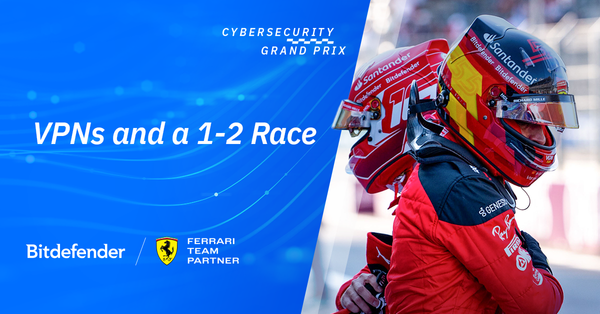IPv6 Is Here. Ready to Embrace it?

Today`s massive transition to the (not so) new IPv6 marks a milestone in the evolution of the Internet ” probably the most significant step since its inception. The Internet has suddenly become a larger place, with enough room to accommodate your home PC, your TV set, your laptop, your other laptop, your tablet, your cellphone, your dog and your dog`s cellphone. But how does this expansion ” the size of the Big Bang – affect you as a user?

A little history
Back in 1983, when it went public, the Internet was a lonely place. At that time, 4.3 billion IP addresses ” unique numbers that identify every device ” was not only sufficient, but unreasonably large for accommodating a server here, a server there and a bunch of terminals spread across the globe.
The introduction of the personal PC, the advent of dial-up communication and the “dot-com bubble” have contributed to the “terra-formation” of the commercial Internet, a place where more content feeds a pool of continuously-growing terminals, that, in their turn, feed the Internet with more and more content. And this is how, back in 1996, a new format of addresses, suggestively called IPv6 was forged and proposed as a series of RFCs. It would offer enough IP addresses for everyone: it can accommodate 3.4 x 10ˆ38, which means 340,282,366,920,938,463,463,374,607,431,768,211,456 – you got that right, that`s more than 340 trillion trillion trillion addresses. However, since theIPv4 pool was still enough for everybody, there was no rush to switch to the new format. That was until February 2011, when IANA assigned the last 16 million free IPv4 addresses, a sign that the Internet will soon run out of IPs.
A bigger, better place for everyone
Today`s introduction of IPv6 is a joint effort of Internet Society (ISOC) ” an effort known as the World IPv6 Launch. The event is marked by permanently enabling IPv6 support across a wide range products and services provided by top-tier players such as Google, D-Link, Akamai, Cisco, Facebook, Yahoo and Microsoft, among others.
Why is IPv6 important for me?
The first and most obvious benefit of IPv6 is the address space. If up until now an IP address visible from the Internet was somewhat costly and usually one per subscription to the Internet provider, ISPs will now be able to offer you as many IP addresses as you need. Basically, you will be able to connect all your computers in the office directly to the internet, rather than creating a local network. This eliminates the need for network address translation (hiding a multitude of PCs behind a gateway) as well as the need for private address spaces (the networks you may have at home and that offer you IPs in the ranges 10.0.0.0 – 10.255.255.255, 172.16.0.0 – 172.31.255.255 or 192.168.0.0 – 192.168.255.255).
But probably, the most obvious benefits for the user who has never been concerned with the “administrative” part of network address depletion are in the areas of security and reliability. IPv6 comes with built-in IPSec ” a technology that ensures secure host-to-host communication. This means that two clients communicating over IPv6 can automatically do authentication, message integrity and encryption or any combination of those. They could theoretically validate that the host they are communicating with is who it claims to be.
The introduction of IPv6 is not only a quantitative upgrade to mitigate the crowded address space. Apart from the security features above, the new iteration of the Internet Protocol features some qualitative upgrades: source address election for computers with multiple addresses, a more robust mechanism for mobile devices, as well as quality of service for mission-critical data exchange such as Voice-over-IP and data streaming.
IPv6 myths debunked
- Will IPv6 networks will be less secure? My computer was safer when it used Network Address Translation
Network address translation (NAT) was not a security feature, but rather a method of crowding huge networks behind a limited number of IP addresses. It may be true that some incoming and outgoing traffic would be inspected by the firewall at the network perimeter, but this is more of a consequence of NAT rather than a feature.
- Will IPv6 be safer than IPv4 then?
Wrong again. It may be true that IPv4 has mandated support for IPSec, but IPSec is only responsible with authentication, integrity and confidentiality of connections, and not with securing the attacks at the application level.
- Is everybody going to switch to IPv6 when the last IPv4 address is assigned?
IPv6 was not made available today. It has been around for more than 16 years with default commercial implementations aimed at regular users dating back since Windows Vista (in Linux it was implemented way earlier). IPv6 will get deployed smoothly, within years. In the meantime, IPv4 and IPv6 will coexist in a bridged form with IPv6 clients “tunneling” their data through IPv4 infrastructures until the last IPv4-only router in the world gives up.
- Spam sent from 340 trillion trillion trillion IP addresses will kill email as we know it
Today, some spam-fighting techniques rely on IP blacklisting. It may be true that the sheer number of addresses will make blacklisting impossible, but this is not what is going to happen. Fortunately, Internet service providers know that allowing unauthenticated mail from the IPv6 address space will mean the end of the e-mail as we know it. So do antispam solution vendors. The latter can always block an entire subnet if necessary, but rest assured, blacklisting has always been the least important component of an anti-spam solution: Bayesian filters and neural networks are way more efficient in sorting spam out.
So, can I have IPv6 now?
To keep the answer short: no. Today`s launch is not a global switch to IPv6. It is an effort made by industry giants to make their services ready for the technology and ready to interconnect with other IPv6-based networks.
It has been more than 16 years since IPv6 specifications were initially sketched and made readily available, but its implementation in real life has not gone so far. The main reason IPv6 hasn`t been universally deployed by now is because it needs hardware and software to support it. And hardware is extremely expensive with no obvious benefits. IPv6 does not introduce new services, nor does it allow the user to approach the Internet in ways never seen before. It is an evolutionary improvement, but not a major game changer and Internet service providers only invest in things they can charge for.
On the operator`s side, IPv6 looks different: a $50 piece of consumer equipment won`t have v6 support. Deployment of IPv6 would call for replacement of hardware (routers to support dual-stack), of software (firewalls, especially), would require redesign of authentication and session setup. This means IPv6 will develop gradually, in a natural manner, as ISPs and other service providers replace their hardware with newer, more powerful networking gear.
tags
Author
Right now Top posts
How to Protect Your WhatsApp from Hackers and Scammers – 8 Key Settings and Best Practices
April 03, 2025
Outpacing Cyberthreats: Bitdefender Together with Scuderia Ferrari HP in 2025
March 12, 2025
Streamjacking Scams On YouTube Leverage CS2 Pro Player Championships to Defraud Gamers
February 20, 2025
How to Identify and Protect Yourself from Gaming Laptop Scams
February 11, 2025
FOLLOW US ON SOCIAL MEDIA
You might also like
Bookmarks








